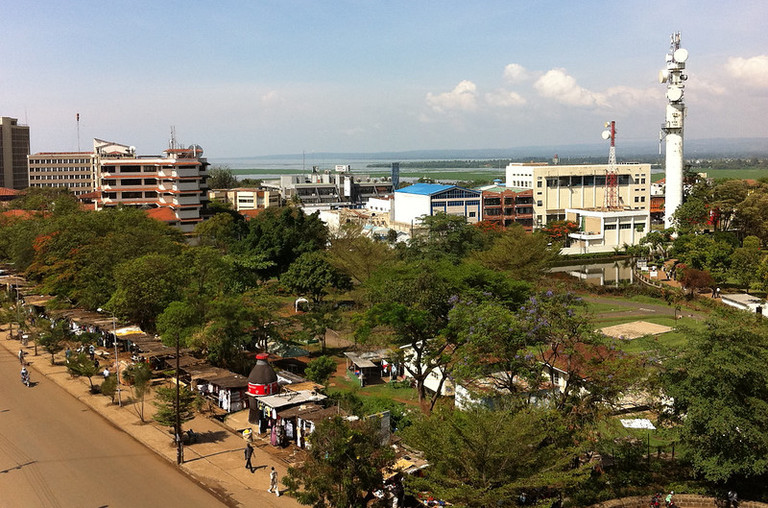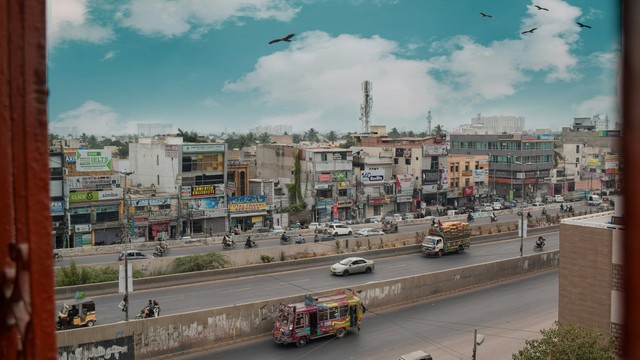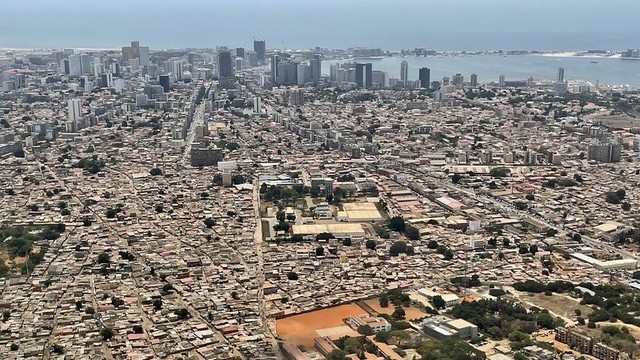Outside the large cities
David Satterthwaite looks back on research carried out in small and intermediate urban centres, over nearly five decades.


There isn't a lot of data about small and intermediate urban centres such as Kisumu, Kenya, but there's still much to debate on how they should be defined and studied (Photo: Stefan Magdalinski via Flickr, CC BY 2.0)
Among the thousands of Indian, Chinese or Brazilian urban centres, how many can you name? Or name among the hundreds of urban centres in so many other nations?
When we think of urban change and urban issues, is it only the relatively few large cities that come to mind? Has this blog series itself been too focused on large cities, especially the world’s 100 largest cities, global cities and large national and regional capitals?
The next few blogs will look 'outside the large cities' at the demographic, economic and political and administrative importance of the tens of thousands of urban centres that are not large cities, and that include the very small – for instance those with a few thousand inhabitants.
Most of the world’s urban population do not live in large cities. Across global regions, 2-3 times as many people live in urban centres with less than 300,000 inhabitants than in the 10-million-plus mega-cities.
Table 1: Percentage of the urban population in different size urban centres (2020)
| Percentage of urban population in 2020 in: | Africa | Asia | Latin America and the Caribbean | World |
|---|---|---|---|---|
| 10 million-plus cities | 8 | 15 | 17 | 13 |
| 5-10 million | 6 | 9 | 3 | 8 |
| 1-5 million | 22 | 22 | 25 | 22 |
| 500,000 - 1 million | 9 | 10 | 8 | 10 |
| 300,000-500,000 | 6 | 6 | 6 | 6 |
| Under 300,000 | 48 | 38 | 40 | 41 |
Source: UN Population Division’s 2018 World Urbanization Prospects. Rounding means columns may not add up to 100%
Demographic importance
There are no United Nations statistics on the distribution of the urban population across different size urban centres below 300,000. For instance, what is the role of cities of under 50,000 inhabitants, or under 20,000, or under 2,500 (to pick up small towns that are agricultural service centres)?
But a review of 60 censuses (PDF) that list all urban centres and their populations shows (PDF) they play a significant role in most national urban populations. These lists also remind us how many urban centres there are: hundreds in many nations, thousands in some. We are reminded too of how many urban centres have less than 20,000 inhabitants.
It’s a small world
So welcome to the world of small and intermediate urban centres – for which there is so little data but still so much to debate on how they should be defined and studied.
This and the next few blogs in this series will examine the size, demographic, economic, social, political, cultural and environmental importance of these urban centres and consider when these centres can evolve to be called ‘cities’.
Work on the ground
In my 46 years working at IIED, I have been part of several research initiatives on small and intermediate urban centres, working with partners and partner institutions in Africa, Asia and Latin America.
The most ambitious of these was carried out more than three decades ago. Headed by Jorge Hardoy from IIED-América Latina, this looked at demographic, economic, social and political change for small and intermediate urban centres in three districts in Uttar Pradesh and Karnataka in India, and regions in Nigeria, Argentina and the Sudan.
These studies covered the last 100-150 years to allow us to better understand long-term patterns and influences; a summary of the research findings was published in 1986.
The findings from the research in Argentina are still the best account I know on where and how prosperous agriculture and prosperous urban development support each other. We also prepared a detailed annotated bibliography (PDF) summarising the key literature on this topic at this time.
Then there were the visits, led by my colleagues from IIED-América, to intermediate urban centres in various Latin American nations, and the visits to local governments in a range of intermediate urban centres in Kenya, where lively discussion took place. In one urban centre in Kenya, I asked the town clerk: “What is key to the town’s success?”
He replied: “A strong frost in Brazil.” (It was a service centre for coffee and the frost would cut Brazil’s production and push up world prices).
Then there were assessments of development programmes in a range of small and intermediate urban centres in the Indian states of Madya Pradesh and Chhattisgarh and to intermediate cities in Odisha (then Orissa). In Uganda, we looked at the role and work of the Ugandan Homeless People’s Federation and Mahila Milan, the federation of women slum and pavement dwellers in India and their successful partnerships with local government.
Then there were visits to intermediate urban centres in Bangladesh as part of the work with the Asian Cities Climate Change Resilience Network (ACCCRN) and to the township of Karonga in the Northern Region of Malawi as part of the work with the Urban Africa Risk Knowledge programme (Urban ARK).
What catches the attention in these small and intermediate urban centres is how particular contexts drive and shape change. So too the desire of the mayor and/or civil servants to engage with you – unlike in large cities. How might intermediate urban centres have flourished if there had been a real decentralisation of power and resources?
E&U’s extensive collection
In the Environment & Urbanization journal, we have encouraged submissions on small and intermediate urban centres and over the last five years have published the following 20 papers:
Single intermediate cities
- Hawassa (Ethiopia)
- Gobabis (Namibia)
- Karonga (Malawi) paper 1
- Karonga (Malawi) paper 2
- Anonymous Tanzanian town
- San José del Guaviare (Brazil)
- Bergrivier (South Africa)
- Udupi (India)
- Rio Branco, Acre (Brazil), and
- Kisumu (Kenya).
Two or more intermediate cities
- Small and medium cities in the Amazon Delta and Estuary (Brazil)
- Ugandan secondary cities
- Dosquebradas (Colombia), Santa Ana (El Salvador) and Santa Tomé (Argentina)
- Mzuzu and Karonga (Malawi), and
- Chaiyaphum and Roi Et (Thailand).
Other coverage of intermediate cities
Four papers in which small and intermediate urban centres feature:
- Housing policies and the roles of local governments in Latin America, and
- Urban vulnerability to flood hazard in Brazilian municipalities.
The next blog in this series will examine the definitions of small and intermediate urban centres.




